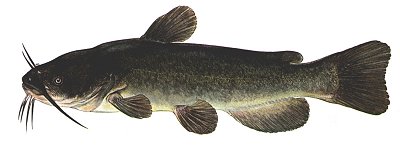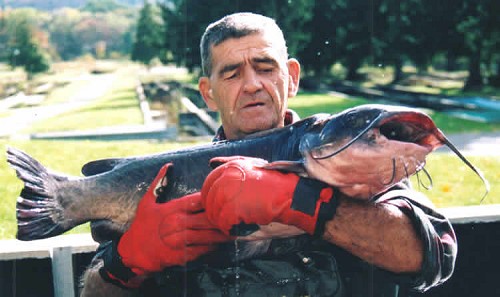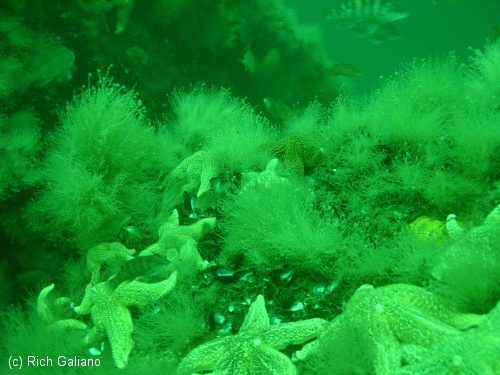Black Bullhead Catfish

Ameiurus melas
Size
to 24"
Description
Ameiurus is Greek and means "primitive" or "curtailed" in reference to the slight notch in the caudal fin; melas is also Greek and means "black." Black bullheads are typically black to greenish-black on the back, ranging to gray or white on the belly. However, in muddy water, the back may be yellowish-brown. Chin barbels are dark or black, never white. The anal fin has 17-21 rays.
Habitat
The original distribution of the black bullhead included the central plains west of the Appalachians and east of the Rockies, extending north into Saskatchewan and Manitoba, and south into south Texas and New Mexico. Today artificial introductions have extended the range west of the Rockies in isolated pockets including areas of British Columbia, Alberta, Mexico, California, Arizona, Nevada, and Idaho. Black bullheads are able to tolerate more turbid water than brown or yellow bullheads.

Feeding Habits
Insect larvae, small crayfish, snails, and dead fish. Bullheads feed primarily by taste and smell and are most active at night.
Spawning Habits
During late spring or early summer, black bullheads excavate nests in mud bottoms and spawn. Areas with some sort of cover are preferred. Nests contain golden-yellow egg masses which are guarded by both parents (at least one is present at all times). Eggs hatch in four to six days. Fry begin to school in compact balls which are guarded by adults until individuals reach about one inch in length. Black bullheads are omnivorous, feeding primarily from the bottom on a wide range of plant and animal material, both live and dead. Fingerlings feed almost exclusively on crustaceans. Immature aquatic insects and crustaceans often comprise a considerable proportion of the adult diet. The average life span is usually less than five years, and most adults are less than one pound. However, some individuals may live more than 10 years and reach eight pounds.

Channel Catfish are often stocked for fishermen. These large catfish can reach sizes of up to 20 pounds, although in their native south they get much larger than that. The deeply forked tail sets them apart from native species.
Catfish are primarily a freshwater family. There are a few species of marine catfish, but none in our area. One species of European catfish grows to 12 ft; a Vietnamese type gets even larger.

Channel cats are stocked across New Jersey.

